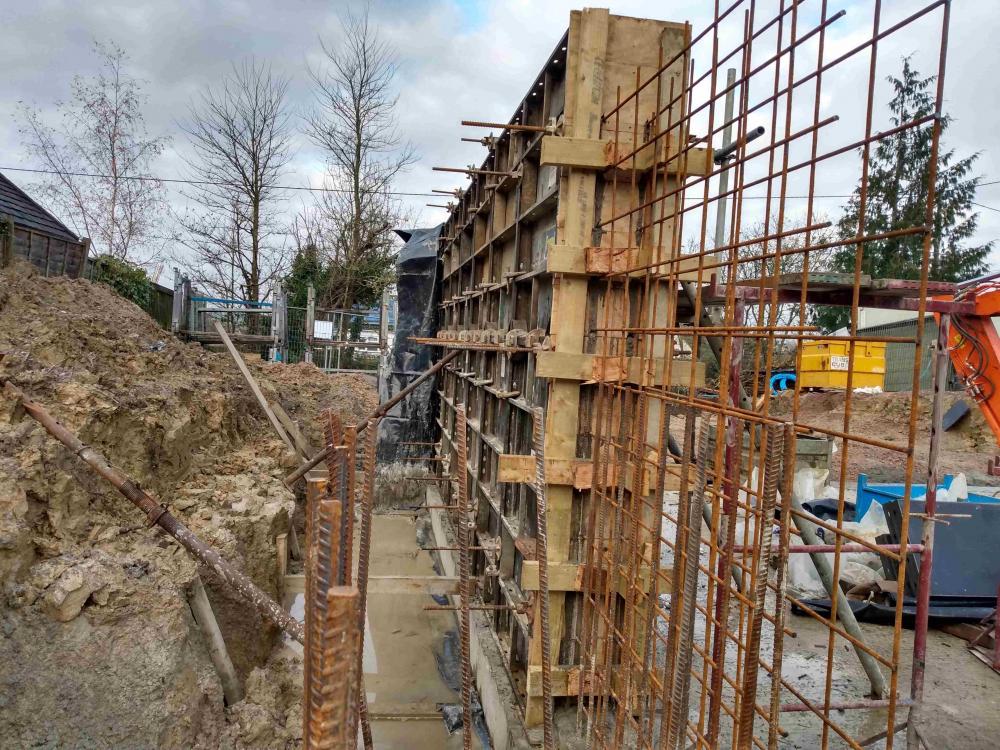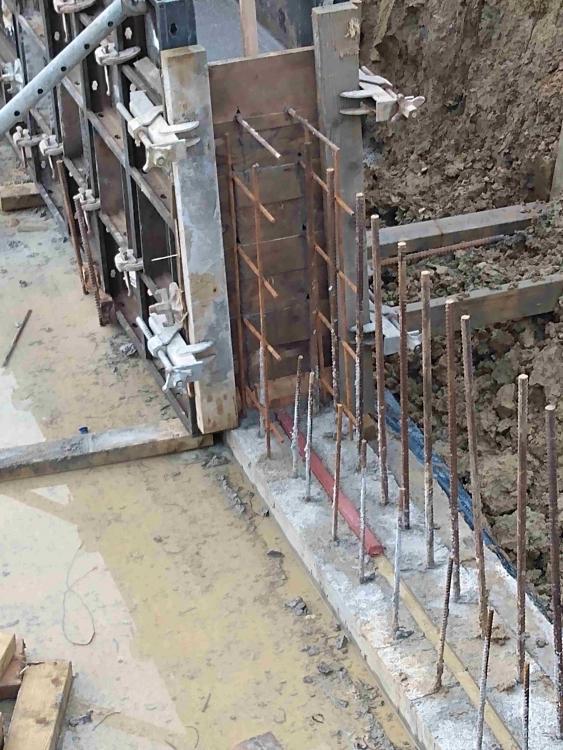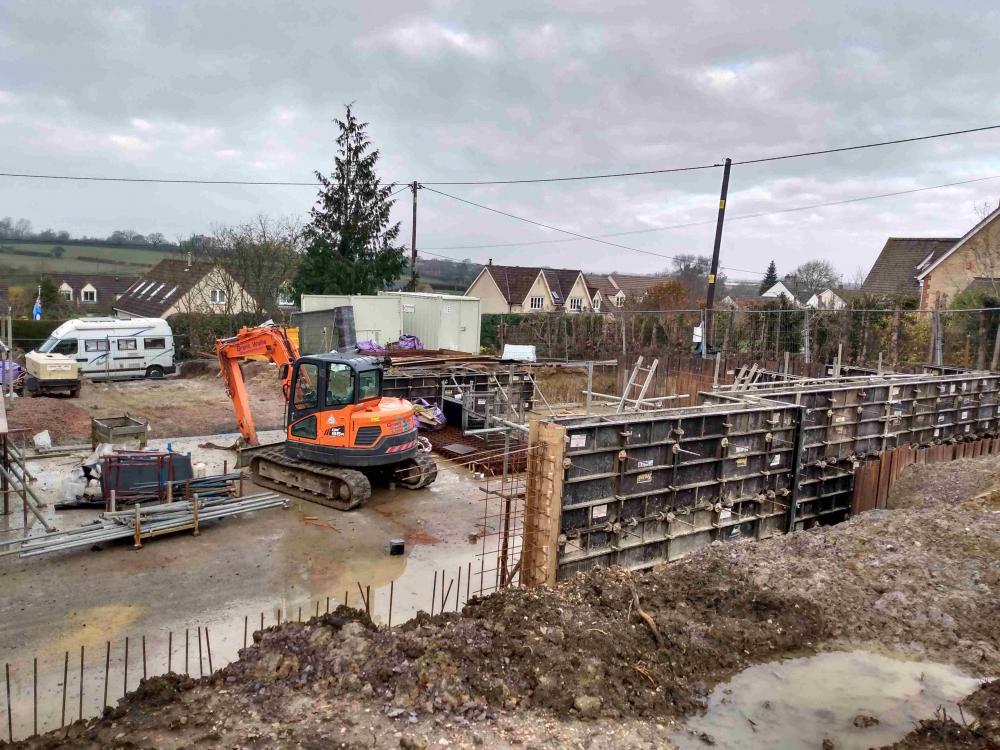Week 10 - Shuttered Walls
As you can see in the video this week they built up the shuttering in layers; first the outside, then the steel in the middle of the sandwich and finally the internal shutter.
Also along the bottom they cleaned out the kicker and laid in a waterbar / waterstop (that brown bar in one of the photos) in a pre-formed channel, this forms a seal and prevents any water coming through the joint between the walls and the floor.
They bolt the two halves of the shuttering together with steel threaded bars inside a foam sleeve so that they can get the right thickness and hold the shuttering against the weight of wet concrete. The steel bars come out when they strike the shuttering and they waterproof the holes. 
As you can see they didn't pour all the walls in one go but built alternating sections and will do the infill next, I think this is partly down to cost of shuttering hire, and partly down to the sheer weight of concrete. The steel shuttering is really solid and well braced so there is no risk of collapse or burst and wet concrete spilling out everywhere like you sometimes see on GD's.
It was a bit of a wet week but they pushed on because the waterproof concrete and pump was booked for Friday, and they had extra manpower on site as my contractors brought in a couple of guys from the shuttering hire company who really do know how to put up shuttering fast! Sometimes it pays to get in the experts who do just one job really well. I had an interesting discussion that groundworks like this is often seen as a pure manual labour job rather than a skilled trade like sparks, brickies or chippies. In fact, at the level our guys work at, it is really a highly skilled trade and they are working to really fine detail and tolerance, plus you only ever get one shot at poured concrete! We have nothing but admiration for them - they are doing an amazing job in some pretty dreadful weather.
Next week they will take down the shuttering so we can really see the exact size and scale of the walls which will be great. Then they will rebuild the shuttering to make the remaining retaining walls and expect to pour these in about 10 days and this will be the last of the poured waterproof concrete - it will be great to get that done before it gets really cold as the waterproof needs at least 2 deg.
Progress on the other elements is crawling along; MBC seem to be taking an age to produce drawings, and Internorm should have the survey complete next week (so about 4 weeks) and are now saying 12 - 15 weeks for delivery - so March-ish. We could say that delays getting MBC drawings make this easier - MBC have not given an estimate of when we will have a frame on site but I am expecting its now into February-ish. And this will give the groundworkers plenty of time to complete the substructure if the weather turns really bad. After 5 years of delays with PP you tend to get a bit blasé about the odd few weeks and we have never had a rigid timescale but it is a bit frustrating how long some of these things take, and how little control you have! Almost certainly their relaxed attitude to timescales will not extend to payment terms!
See https://www.dropbox.com/sh/th9f6e3cel5dm1q/AAAfsWdAH184J75bCNUUtzVra?dl=0 for the weekly videos. The weather for the pour of the walls was dry and sunny, but very high humidity give it that ghostly misty look - will try to get the next pour a bit clearer - I think the presence of a concrete pump upsets the camera somehow!
-
 1
1





4 Comments
Recommended Comments
Create an account or sign in to comment
You need to be a member in order to leave a comment
Create an account
Sign up for a new account in our community. It's easy!
Register a new accountSign in
Already have an account? Sign in here.
Sign In Now